Hager TRM692G Handleiding
Hager
Niet gecategoriseerd
TRM692G
Bekijk gratis de handleiding van Hager TRM692G (6 pagina’s), behorend tot de categorie Niet gecategoriseerd. Deze gids werd als nuttig beoordeeld door 53 mensen en kreeg gemiddeld 4.9 sterren uit 27 reviews. Heb je een vraag over Hager TRM692G of wil je andere gebruikers van dit product iets vragen? Stel een vraag
Pagina 1/6

*: "Toggle switch type" control by switch is only possible on the inputs of TRMxxx products.
*: El control de “tipo telerruptor” mediante un interruptor sólo es posible con las entradas de los productos TRMxxx.
**: Function not available on TRC270D / Función no disponible en el TRC270D
List of functions / Lista de funciones
ON/OFF receivers
Receptores Marcha/
Parada
Dimmer
Regulador Shutters/blinds
Persianas/toldos
fct LED Function /
Función
Function /
Función
Function /
Función
ON/OFF (Toggle
switch*)
ON/OFF (Telerruptor*)
ON/OFF Dimming
+/-
ON/OFF, Regulación
+/-
Up/Stop (RTM692G only).
Subir/Stop (solo RTM692G)
ON ON, Dimming +
ON, Regulación +
Up, stop
Subir, Stop
OFF OFF, Dimming -
OFF, Regulación -
Down, stop
Bajar, Stop
Scenario 1
Escenario 1
Scenario 1
Escenario 1
Scenario 1
Escenario 1
Scenario 2
Escenario 2
Scenario 2
Escenario 2
Scenario 2
Escenario 2
Timer
Temporizador
Timer
Temporizador
Down/Stop
Bajar/Stop
ON/OFF (switch)
ON/OFF (interruptor)
ON/OFF (switch)
ON/OFF (interruptor)
Shutter control (switch)
Control de persianas (interruptor)
Priority ON**
Forzado ON**
Up priority
Forzado subir
Priority OFF**
Forzado OFF**
Down priority
Forzado bajar
Clear
Borrado
Clear
Borrado
Clear
Borrado
Transmitters
Emisores
Receivers
Receptores
Transmitters/receivers
Emisores/receptores
Buttons and
LEDs
All are tted with a R button and a
corresponding status LED.
All are tted with a R and an T button and the
corresponding status LED.
Botones y
LED
Todos incorporan un botón y el R
LED de estado correspondiente.
Todos incorporan 2 botones de y y el LED deRT
estado correspondiente.
Product
examples
Ejemplos de
productos cfg
In1In2
cfg
cfg
cfg
TRM702A
RF1.M EC/EP
868 MH z
IP30
cfg
cfg
TRM702A ;
TRB302B
TU444 ; TRU406
TRE301 ; TRE302
TRE520 ;
TRE530
cfg fct
on
off
TRB201
TRC270F
cfg fct
TRB201
L N N
Made in France
µ
16
A AC1 230 V
Receiver category 2
Transmitter duty cycle 1 %
fctcfg
cfg
fct
cfg
5 7 8321 4 6
L N S2
S1
E1
TRE400
TRM692G
In1In2
fct
fct
cfgcfg
cfg
z Description
quicklink
designates the tool-free conguration
mode, using the buttons on the products. All products
congurable in
quicklink
mode are compatible with
one another and can be operated within the same
installation.
These products are used to control lighting, opening
elements (roller shutters/blinds) and heating.
Conguration involves assigning a function to each
input of a transmitter and then linking it to one or more
receivers to be controlled. For each receiver type, the
table below shows the available functions associated
with a colour LED.
Use with a home automation supervision
system
Some
quicklink
products can be associated with a
home automation controller, such as the TKP100A,
to take advantage of advanced control and display
features.
In this case, the complementary pairing procedure is
initiated using the control software and may require
the use of one or more buttons on the product. For
more information, refer to the documentation for the
home automation supervision system.
Description of the products / Descripción de los productos
Heating
Calefacción
Function on the EK760 display
Función en la pantalla del EK760
Comfort
Confort
Standby
Standby
OFF
Scenario 1
Escenario 1
Scenario 2
Escenarion 2
Temporary
Minutena
Comfort / Standby
Confort / Standby
Priority
Forzado
Priority
Forzado
del Delete
Delete
/
z
quicklink
conguration instructions
rInstrucciones de conguración de
quicklink
t
Manual de conguração
quicklink
k
quicklink
1
6LE001295A
6LE001295A
r Presentación
quicklink
es el modo de conguración sin
herramientas y utilizando los botones que vienen en
los productos. Todos los productos congurables en el
modo
quicklink
son compatibles entre sí y pueden
utilizarse dentro de una misma instalación.
Estos productos permiten controlar luces, batientes
(persianas enrollables / toldos) y calefacciones.
La conguración consiste en asignar una función a
cada entrada de un emisor y conectarlo después con
uno o varios receptores para controlarlos. En el cuadro
inferior se indican, por tipo de receptores, las funciones
disponibles asociadas a un color de LED.
Uso con un sistema de supervisión domótico
Ciertos productos
quicklink
se pueden asociar con
un controlador domótico, por ejemplo el TKP100A,
para disponer de funciones avanzadas de control y
visualización.
En este caso, el procedimiento complementario de
emparejamiento se inicia desde el programa de control
y puede que haya que usar uno o más botones situados
en el producto. Para obtener más información, consultar
la documentación del sistema de supervisión domótico.

Conguring a function (5 steps) / Conguración de una función (5 pasos)
Action / Acción Result / Resultado
Starting conguration / Inicio de la conguración
Give a short press on the del emisor o J
del emisor/receptor.
Pulsar brevemente el botón J-drukknop
van de zender of van de zender/ontvanger.
cfg
The cfg • LEDs of all the receivers and
the emitter come on.
Se encienden los LED cfg-LED • de
todos los receptores y del emisor.
cfg fct
on
off
cfg
N
In1 In2
N L
fct
Input selection / Selección de la entrada
Give a short press on the button or a
double switchover of the switch to be
congured.
Apretar brevemente el pulsador o accionar
dos veces el interruptor que se va a con-
gurar.
The cfg • LED of the emitter ashes
for 1 s.
El LED cfg-LED • del emisor parpadea
durante 1s.
Function selection / Selección de la función
Select the function by successive short
presses on the button of the receiver K
to be controlled.
Seleccionar la función pulsando repetida-
mente el botón K del receptor que se va
a controlar.
cfg fct
on
off fct
1x
2x
3x
4x …
Scrolling of the functions indicated by
the colour of the LED on the receiver fct
(see list).
Desplazamiento por las funciones
indicadas por el color del LED fct del
receptor (véase la lista).
cfg fct
on
off
2 3x x …
…
1 4x x
Conrmation of the function / Validación de la función
Press for > 2s on button of the receiK-
ver until the cfg • LED ashes.
Pulsar > 2s el botón K del receptor
hasta que parpadee el LED cfg •.
fct
on
off fct
> 2s
The function identied by the colour of
the fct LED is conrmed.
Se valida la función identicada por el
color del LED fct.
cfg
on
off
Exiting conguration mode / Salida del modo de conguración
Give a short press on the J
button of the transmitter or transmitter/
receiver.
Pulsar brevemente el botón J del emisor
o del emisor/receptor.
cfg
The cfg • LEDs of all the receivers and
the emitter go out. End of conguration.
Se apagan los LED cfg • de todos los
receptores y del emisor. Fin de la con-
guración.
cfg fct
on
off
cfg
N
In1 In 2
N L
fct
z Display of a congured function
In step 2 the fct LED indicates the colour of the congured function.
Group control
Repeat steps 3 and 4
on the other receivers to be integrated in a group.
Only the function selected on the rst receiver and clearing will be available for
selection on the other receivers.
Editing a congured function
In step 3, you can edit the displayed function, except in the case of group
control where it is necessary to clear the receivers of the group before choosing
a new function.
Clearing a congured function
In step 3 select the "Clear" function and then conrm in step 4.
Settings
Setting: Duration of the timer/Raising time of the shutter/scenario blocking
Setting of these parameters is required for:
• changing the value of the timer,
• adjusting the total raising time (scenario function optimisation or level call)
• authorising or prohibiting editing of a scenario by the user.
Example: Example: editing the duration of the timer
After having conrmed the timer function in step 4, (the actuator then ashes
in timer mode), follow the steps below to select a value from the table of values,
or else repeat steps 1
, 2 and 4
a.
r Visualización de una función congurada
En el paso 2 el LED fct indica el color de la función congurada.
Control de grupo
Repetir los pasos 3 y 4 en los demás receptores que se van a incorporar
al grupo. En los demás receptores solamente estarán disponibles la función
seleccionada en el primer receptor y el borrado.
Modicación de una función congurada
En el paso
3 se puede modicar la función indicada en pantalla, salvo en el caso
del control de grupo, que requiere borrar todos los receptores del grupo antes de
elegir una nueva función.
Borrado de una función congurada
Seleccionar la función de “Borrado” en el paso 3 y validarla en el paso 4.
Ajustes
Ajuste: duración del temporizador/ tiempo de subida de la persiana/ bloqueo
del escenario
Estos parámetros se tienen que ajustar para:
• Cambiar el valor del temporizador.
• Ajustar el tiempo total de subida (optimización de la función de escenario o
llamada de nivel)
• Autorizar o no la modicación de un escenario por parte del usuario.
Ejemplo: modicación de la duración del temporizador.
Después de validar la función de temporizador en el paso 4 (el accionador parpadea
en el modo de temporizador), seguir los pasos a continuación para seleccionar un
valor de la tabla de valores o repetir los pasos 1 y 2 y después el 4a.
Action Result Acción Resultado
Press for > 5 s on button K of the receiver
until the cfg • LED ashes.
The LED goes off and then fct
indicates the default value by the
number of ashes.
Pulsar > 5s el botón del receptor K
hasta que parpadee el LED cfg•.
El LED se apaga y después indica el fct
valor predeterminado mediante el número
de destellos.
Select the value by successive short
presses on button .K
Scrolling of the values
indicated by the number of
ashes of the fct LED.
Seleccionar el valor pulsando
repetidamente el botón K.
Desplazamiento por los valores indicados
por el número de destellos del LED . fct
Press for > 2 s on button of the K
receiver until the cfg • LED ashes.
The selected function is
conrmed. Pulsar > 2s el botón del receptor K
hasta que parpadee el LED cfg•. Se valida la función seleccionada.
Exit conguration mode by a short press on
the button.JThe LED goes off; return to cfg
normal operation. Salida del modo de conguración
pulsando brevemente el botón .J Los LED se apagan, retorno al cfg
funcionamiento normal.
2 6LE001295A

z Scenario function
The scenario control is used to activate the desired
ambience directly, by simultaneously acting on
various types of receiver (e.g. TV scenario: turn off
the ceiling lights + switch on appliances + lower the
shutters for the living room).
This control can be assigned to any transmitter of
the installation.
r Función de escenario
El control de escenario permite activar directamente
el ambiente deseado accionando simultáneamente
receptores de distinta naturaleza (por ejemplo,
escenario TV: apagar la lámpara del techo +
encender apliques + bajar las persianas del salón).
Este control puede gestionar cualquier emisor de la
instalación.
The scenario function is produced in 3 steps:
A. Programming the links between the scenario
button and the receivers to be controlled,
B. Setting the scenario; this involves dening the
desired state of each receiver concerned in your
scenario (lamp on, level of dimming or shutter
open, etc.)
C. Storing of the dened ambience using the
scenario button.
Programming the scenario
• In step 3 select the scenario function and conrm
the link (step 4) on the rst receiver,
• repeat steps 3 to 4 to link the remaining outputs
to be controlled.
Note: an output can be integrated into a maximum in
2 different scenarios.
Setting the scenario ambience
La función de escenario se establece en 3 pasos:
A.
Programación de las conexiones entre el botón de
escenario y los receptores que se van a controlar.
B. Ajuste del escenario, que consiste en denir el
estado que se quiere que adopte cada receptor
incluido en el escenario (lámpara encendida, nivel
de regulación o de apertura de la persiana, etc.).
C. Memorización en el botón de escenario del
ambiente denido.
Programación del escenario
• Seleccionar la función de escenario en el paso
3 y validar la conexión (paso 4) en el primer
receptor.
• Repetir los pasos 3 y 4 para conectar las
demás salidas que se van a controlar.
Atención: una salida sólo puede estar incluida en
un máximo de 2 escenarios diferentes.
Ajuste del ambiente del escenario
50
%
O
F
F
5
0
%
• Produce the desired ambience by using the
individual controls of the various electrical receivers
involved in your scenario (e.g. switch off the ceiling
lights, dim the appliance to 50 %, open shutter to
mid-height).
Note: To set the shutter, rst raise the shutter fully
and wait for 2 minutes in this position, then lower
the shutter to the desired position. (except for
TRM692G, direct positioning of the shutter)
Storing the scenario
• Store the status of the receivers corresponding to
the scenario by a long press, > 5 s, on the scenario
button that activates the scenario.
A brief change of status of the outputs indicates
storage of the status of the various electrical
receivers.
After this, each press on the scenario button restores
this memorised ambience.
• Crear el ambiente deseado utilizando los controles
individuales de los distintos receptores eléctricos
incluidos en el escenario (por ejemplo, lámpara
del techo apagada, regulación del aplique al 50%,
persiana abierta a media altura).
Atención: para ajustar la persiana, subirla primero
del todo, esperar 2 minutos en esa posición, y bajar
después la persiana hasta la posición deseada
(salvo para el TRM692G, colocación directa de la
persiana).
Memorización del escenario
• Memorizar los estados de los receptores
correspondientes del escenario pulsando > 5 s el
botón de escenario que activa el escenario.
Un breve cambio de estado de las salidas indica
que se han memorizado los estados de los distintos
receptores eléctricos.
De ahí en adelante, cada vez que se pulsa el botón
de escenario se restablece el ambiente memorizado.
Number of ashes Timer
value
Time
taken to
raise the
shutter**
Scene lock
Número de
destellos
Valor del
tempo-
rizador
Tiempo de
subida de
persiana**
Bloqueo de
escenario
11 s 10 s
230 s 15 s
31 min 20 s
42 min 30 s
53 min * 40 s
65 min 50 s
715 min 1 min
830 min 1 min 15 s
91 h 1 min 30 s
10 3 h 2 min *
Setting the values
Ajustes de los valores
Ex. e.g. TV scenario /e.j. escenario TV
BP Scenario button
BP escenario
BP Scenario button
BP escenario
Scenario setting / Ajuste del escenario
Individual controls
Controles individuales
z Timer: multiple time delays
Successive presses of the timer control button
increase the timer delays. The effective duration will
then be multiplied by the number of presses carried
out in the 10 s following the rst press.
Factory reset of a product
Press and hold down button until the Jcfg • LED
ashes (> 10 s), then release. The end of the factory
reset is signalled by the extinction of the cfg •
LED.This operation completely clears the product
conguration, whatever the conguration mode.
If the product has been congured using the TX100
or by ETS, it is preferable to perform the factory reset
using these tools in order to remove the product
from the project concerned. After a power up or
factory reset, wait 15 seconds before performing a
conguration.
System limit
A product may be linked to a maximum to 20 other
products.
Error signals
A very rapidly ashing cfg • LED indicates an error
or an incompatible link. (e.g. a group control mixing
lighting and shutter commands).
r Temporizador: temporización múltiple
Pulsando repetidas veces el botón de control del
temporizador se aumenta la temporización. La
duración efectiva se multiplica entonces por el
número de pulsaciones efectuadas en los 10s
siguientes a la primera pulsación.
Restablecimiento del ajuste de fábrica
Mantener pulsado el botón y soltarlo cuando J
el LED cfg • parpadee (> 10s). Cuando el LED cfg
• se apaga quiere decir que se p3-ha restablecido el
ajuste de fábrica.
Esta operación borra toda la conguración del
producto independientemente del modo de
conguración.
Si el producto se ha congurado con el TX100
o mediante ETS, es preferible utilizar estas
herramientas para restablecer el ajuste de fábrica
y retirar el producto del proyecto correspondiente.
Después de conectar la corriente o restablecer el
ajuste de fábrica, esperar 15 segundos antes de
comenzar la conguración.
Límite del sistema
Un producto se puede conectar con un máximo de
otros 20 productos.
Indicación de errores
Un parpadeo muy rápido del LED cfg • indica un
error o una conexión incompatible.
(p. ej., un control de grupo que combine controles de
iluminación y persianas).
*: Default value / Valor predeterminado
**: except for the TRM692G, procedure for programming the up/down time integrated into the product (refer to the product instructions).
**: Salvo el TRM692G, en el que el procedimiento de aprendizaje del tiempo de subida/bajada está integrado en el producto (consultar las instrucciones del producto).
Each new long press,
> 5 s, stores the new
ambience.
Cada vez que se pulsa el
botón > 5 s se memoriza
el nuevo ambiente.
3 6LE0012795A
Product specificaties
| Merk: | Hager |
| Categorie: | Niet gecategoriseerd |
| Model: | TRM692G |
Heb je hulp nodig?
Als je hulp nodig hebt met Hager TRM692G stel dan hieronder een vraag en andere gebruikers zullen je antwoorden
Handleiding Niet gecategoriseerd Hager
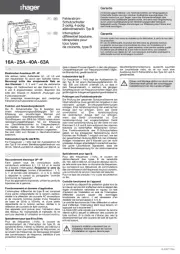
12 Mei 2025
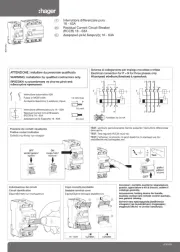
12 Mei 2025

12 Mei 2025
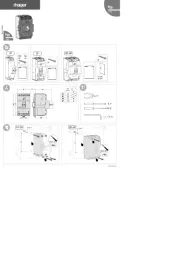
12 Mei 2025
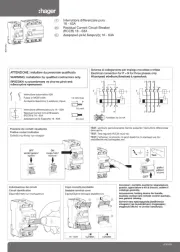
12 Mei 2025
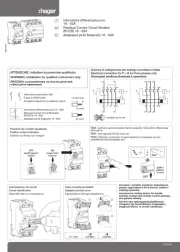
12 Mei 2025
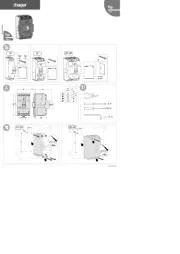
12 Mei 2025
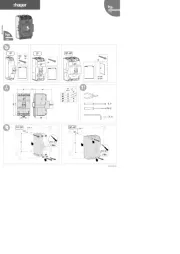
12 Mei 2025
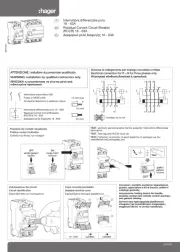
12 Mei 2025
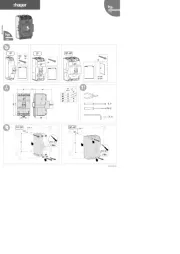
12 Mei 2025
Handleiding Niet gecategoriseerd
- Kicker
- Ravanson
- Rocstor
- Pichler
- Fantech
- BenQ
- Artusi
- Kata
- Stelton
- Robust
- OzCharge
- Subaru
- Auna
- Livn
- Selfsat
Nieuwste handleidingen voor Niet gecategoriseerd

3 Augustus 2025
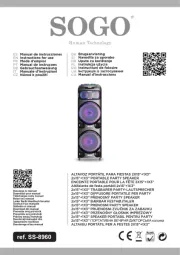
3 Augustus 2025
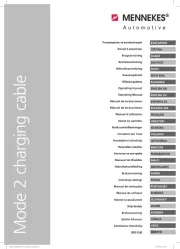
3 Augustus 2025
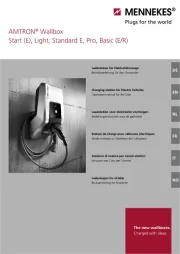
3 Augustus 2025
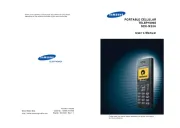
3 Augustus 2025

3 Augustus 2025

3 Augustus 2025

3 Augustus 2025
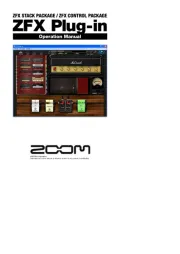
3 Augustus 2025
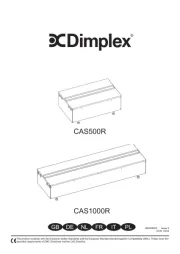
3 Augustus 2025